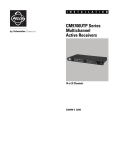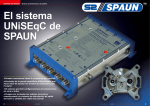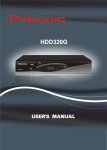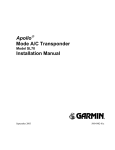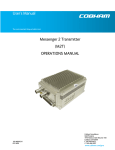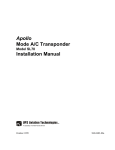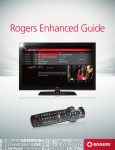Download DMX MArquee W610 Specifications
Transcript
Technical Guide W610 Media Player September 2011 Page | 1 Marquee Technical Guide - Version 6.3.11 – 101911 DMX Inc. ©2011 All Rights Reserved Table of contents Marquee Introduction .....................................................................................................................................3 Marquee Solution Overview .........................................................................................................................4 Media Player – W610 ......................................................................................................................................5 media player specifications........................................................................................................ 5 step by step instructions ........................................................................................ 8 prior to leaving client premise .............................................................................. 10 Network Configuration.................................................................................................................................11 Wireless Network Activation and / or Static IP........................................................................ 11 alternate Network Connection.................................................................................................. 16 Video pass-thru adapter (standard) configuration ...............................................................................17 installing video pass-thru (standard definition) using the Hauppauge HVR-1950................ 18 installing video pass-thru (high definition) using the Hauppauge HD-PVR .......................... 20 Quick Start Installation of Marquee W610 player .................................................................................22 Audio Visual Best Practices Guide ..........................................................................................................23 Troubleshooting ........................................................................................................................ 24 Tested and Approved for Best Practices................................................................................. 26 Page | 2 Marquee Technical Guide - Version 6.3.11 – 101911 DMX Inc. ©2011 All Rights Reserved Marquee Introduction Welcome! This Marquee Technical Guide has been designed to walk you through the technical aspects and installation of the Marquee system with the W610 media player - step by step giving you the detail and supporting information you will need to perform a standard installation. Towards the end of the document, you will find recommendations on how to handle less ordinary installations. You will also find a one page “Quick Start Installation” guide, which is included with each player. Please remember, you may always call DMX Customer Service at 888-825-9496 for assistance in all installation matters. Page | 3 Marquee Technical Guide - Version 6.3.11 – 101911 DMX Inc. ©2011 All Rights Reserved Marquee Solution Overview DMX Call Center Marquee Media Player Page | 4 Marquee Technical Guide - Version 6.3.11 – 101911 DMX Inc. ©2011 All Rights Reserved Media Player – W610 media player specifications Dimensions 7.56” x 8.27” x 2.44” (W x D x H) Weight 5 pounds, including external power supply Network 10/100/1000 Mbps Ethernet 802.11b/g/n wireless Supports WEP, WPA, WPA2, CIPHER-TKIP & CIPHER-CCMP wireless encryption Supports DHCP & static addressing Storage 250 GB Hard Disk Drive, Optional 16 GB or 32 GB Solid State Drive Video Input Supports pass-through of external video sources using optional video encoder Video Connectors HDMI, DVI-I (Dual Link) and VGA Video Output Standard & High Definitions up to 1080p Audio Connectors 3.5 mm Stereo or HDMI Operating System Linux Mounting Rubber feet, or VESA/FDMI display mount Media CODECs Supports all standard media types Power Consumption Less than 32 watts Approvals FCC Part 15 Class A (entire system), UL/CE/TUV (power supply) Page | 5 Marquee Technical Guide - Version 6.3.6 – 021111 DMX ©2010 All Rights Reserved Marquee W610 Player I/Os USB Port HDMI DVI VGA LAN Port Wireless Analog Audio Page | 6 Marquee Technical Guide - Version 6.3.9 – 040511 DMX ©2010 All Rights Reserved installation of W610 player required tools & equipment USB Keyboard Ethernet patch cable HDMI, VGA or DVI display and video cables. If using VGA cables, while not required for all displays, VGA DDC2 cables are recommended. Male 1/8” (3.5mm) cable (if audio is supported and HDMI is not utilized) Tie wraps Cable cutter helpful tools for player configuration and troubleshooting Laptop computer Network cable tester label maker (to label any cables that may run a long distance Spare RJ-45 (Ethernet) connectors DMX customer support hours Monday through Friday, 7:30 AM to 7:30 PM Central Standard Time Saturday: 9:00 AM - 6:00 PM Central Standard Time pre installation steps 1. Standard wired or wireless broadband Internet access is required. In addition, HTTP, HTTPS and SFTP ports (80, 443 and 22, respectively) should be enabled. Specific IP ranges to configure firewall settings are listed in the Optimal Firewall Configuration section of this document. 2. Verify displays support Marquee. Most displays on the market today will support Marquee. If the client has an existing video distribution solution, the below recommendations will help ensure the monitors take maximum advantage of Marquee: a. Identify inputs (e.g., HDMI, VGA, DVI) that can / will be used. b. Determine the location where Marquee player(s) will be installed. Ensure that dedicated (non-switched) power is present, and that network cabling or wireless coverage is available. c. Review the video distribution requirements for distances and numbers of screens. The distance from the signage player to each monitor, and functionality required, dictates the type of connection. Distances of less than 100 feet may not need any amplification of signal and may be able to split signal to up to three monitors using VGA two way splitters and high quality VGA cables. Review supporting documentation for any solution over three monitors and or a distance of over 100 feet. Please verify if content is being presented in landscape or portrait mode, and if live TV or other external video is to be presented on the screens. For more detailed information on these and other scenarios, consult the current Marquee Installation Instructions. Page | 7 Marquee Technical Guide - Version 6.3.9 – 040511 DMX ©2010 All Rights Reserved 3. Out of the box, the W610 defaults to operate from a wired network connection. If performing a wireless setup, you will need to know the following information in advance of performing configuration: – – – – SSID Encryption Key Type (e.g., WEP/WPA) Passphrase type (ASCII/Hex). If this is unknown, and the key contains only the letters A-F and numbers, it is most likely a Hex key. Passphrase or Key After obtaining this information, please follow the instructions later in this document under Wireless Installations. 4. The default network configuration uses DHCP to acquire a network address. If a static IP address if preferred or required, follow the instructions later in this document. step by step instructions Identify a discreet location for placement of the media player. Ideally, it should have limited access and be near an existing network port to the public Internet. A network/phone closet, manager‟s office or other secure location is recommended. Place the media player in a location near the dedicated power source, the available network port, and where at least 3” of airflow is available around the unit. The media player may be mounted on its side if necessary. Confirm availability of a dedicated (non-switched) power source. The media player receives content and software updates overnight. It should not be powered by a source that is turned off at any time. A surge suppressor with COAX suppression is recommended. Note that standard broadband Internet access is required. In addition, HTTP, HTTPS and SFTP ports (80, 443 and 22, respectively) should be enabled. Recommended Step: Using a laptop (or other network device), connect to the existing network and confirm that marquee.dmx.com can be pinged. If it is not accessible, network connectivity must be corrected prior to proceeding. Connect one end of the included Ethernet patch cable to the existing host network port. Connect the other end of the Ethernet patch cable to the RJ-45 Ethernet port on the rear of the media player. If a wireless network is being utilized, connect the wireless antenna to the antenna post on the rear of the media player. Connect the appropriate cables from the video screen to the appropriate connector on the rear of the media player. The screen must be connected and powered on prior to powering the media player. Page | 8 Marquee Technical Guide - Version 6.3.9 – 040511 DMX ©2010 All Rights Reserved If audio is being installed, and HDMI video cables are not being used, connect a male 1/8” (3.5mm) connector cable (not included) to the GREEN analog audio connector on the rear of the media player. Connect the other end of this cable to the audio amplifier or display audio input. NOTE: The W610 media player defaults to using audio over HDMI. If analog audio is to be used, this must be communicated when contacting DMX Customer Service. The player settings will be remotely changed to output analog audio at this time. While the W610 supports multiple output connector types, only one output can be used at a time (e.g. can not use the HDMI and VGA at the same time to connect one player to two screens). If the player is required to support live video content from an external source (e.g., cable or satellite TV), please see the required installation steps later in this document. Connect the included power cable to the rear of the media player. Connect the other end of the power cable to a dedicated (non-switched) power source. Unit should power on automatically. If not, press the power button on the front faceplate of the media player. The screen will be black for about 25 seconds as the player starts. Configure the player Time Zone to insure proper playback of scheduled content. To do so attach a keyboard to the media player. Simultaneously press CTRL-ALT-T. Select the Geographic Area where the player will be installed. Press ENTER. Select the City or Region Corresponding to Your Time Zone. Press ENTER. Upon startup, the media player will display a series of diagnostic messages for approximately 90 seconds. Green Pass messages throughout indicate that the player is successfully installed and able to communicate with Marquee servers. Any Red Fail messages indicate the location of a network problem. Note these and provide them to the local network administrator to troubleshoot. At the conclusion of this diagnostic screen, the image will either: change to a Marquee logo until the client playlist has completed the download process; or if you have pre-loaded your client‟s playlist prior to installation, the unit will begin to display the client content; or continue to display the Marquee logo until a client playlist is assigned. NOTE: The wired network LED indicators on the W610 also provides information on the speed of the connection as described below: Yellow solid = 10 Mbps Link Yellow blink = 10 Mbps activity Yellow & Orange solid = 100/1000 Mbps Link Yellow & Orange blink = 100/1000 Mbps activity Call DMX Customer Service at 800-345-5000 to confirm connectivity, provide serial number, validate location information and activate player. Page | 9 Marquee Technical Guide - Version 6.3.9 – 040511 DMX ©2010 All Rights Reserved Please advise your client that download times will vary substantially, and are based upon the number of files being downloaded, the type of files (video or image) and the amount of available bandwidth to the media player. prior to leaving client premise Point out location of the serial number, power button, power cord, Internet and cable connections to the customer. Ensure your customer knows how to contact you should they experience any problems. Settings are available via the Resources section within the Marquee Dealer menu. Page | 10 Marquee Technical Guide - Version 6.3.9 – 040511 DMX ©2010 All Rights Reserved Network Configuration Wireless Network Activation and / or Static IP The Marquee media player will automatically connect with Marquee servers using a wired network. In some installations, you may wish to utilize a wireless network. To do so, perform the following steps to activate the wireless network on the Marquee media player. Note: If performing a wireless setup you will need to know the following information in advance of performing configuration: – – – – SSID Encryption Key Type (e.g., WEP/WPA) Passphrase type (ASCII/hex). If this is unknown, and the key contains only the letters A-F and numbers, it is most likely a hex key. Passphrase or Key step by step instructions The Marquee players have a built-in wireless graphical user interface (GUI) to connect the Marquee player to your network. To access the Wireless GUI please follow these steps: Step 1: Attach a keyboard and mouse to the player. Step 2: Apply power and start the media player. Step 3: After the diagnostic screen concludes playback, simultaneously press CTRL – ALT – Q on the keyboard. Playback will cease until restarted by simultaneously press CTRL – ALT – S. Step 4: Simultaneously press CTRL – ALT – D on the keyboard. This will make the Network Setup Utility appear and show all available networks. NOTE: If during this process the player restarts or covers part of the screen, use ALT – TAB to view the Network Setup Utility window. Page | 11 Marquee Technical Guide - Version 6.3.9 – 040511 DMX ©2010 All Rights Reserved Step 5: Locate the SSID (network name) that you wish to connect. Step 6: Click on the check box next to “Automatically connect to this network” NOTE: You MUST click the checkbox labeled “Automatically connect to this network”. If you do not, the player will not reconnect to this network when the player is restarted. Step 7: Click the „Connect‟ button for the network you wish to connect. Step 8: If the network you are attempting to connect to is encrypted, you will be prompted for the additional data. Step 9: If you need to input a static IP address for this player you will do this on the following screen. Simply click on “Use Static IP” and input the proper IP address information for this network. Step 10: Enter the password for the SSID Step 11: Once all the data has been entered press the „OK‟ button. Page | 12 Marquee Technical Guide - Version 6.3.9 – 040511 DMX ©2010 All Rights Reserved After click OK on the Properties Page you will be taken back to the Network Setup Utility page. Page | 13 Marquee Technical Guide - Version 6.3.9 – 040511 DMX ©2010 All Rights Reserved Step 12: Verify that the check the box labeled „Automatically connect to this network‟ is selected. Step 13: Click the „Connect‟ button under the SSID that you are connecting to and the player will try to connect using the data entered. NOTE: To verify that the player has properly connected to the network check the text on the „Connect‟ button has changed to „Disconnect‟. If text has not changed, press the „Refresh‟ button at the top of the page. If the text still has not changed to „Disconnect‟ you will need to verify the network settings were entered correctly. Step 14: After verifying the player is connecting to the network, press „Quit‟ to exit network setup. Step 15: Reboot the media player. Upon restart, confirm connectivity and communication with remote servers using the feedback provided on the Loading Screen. Should you require assistance, call DMX Customer Service at 800-345-5000. Page | 14 Marquee Technical Guide - Version 6.3.9 – 040511 DMX ©2010 All Rights Reserved optimal firewall configuration DMX Marquee and associated products are configured to work outbound through ports 80, 443 and 22. Our products do not listen for, nor do they require, any inbound connections. 1. Important Note: Steps 2 and 3 are discouraged unless absolutely necessary because such IP ranges need to be periodically audited and modified, creating additional maintenance to your network. These changes are rare, but they may be necessary to continue to provide the maximum performance for the Marquee family of applications. Maintenance and failover events may cause you to connect to servers within any of the ranges. If your firewall includes a content or application data scanning filter, this may cause blocking or latency, which would be indicated in the log files for the filter. To address this problem, verify the below IP ranges will not be scanned or filtered by content or application data scanning filters by specifying exception IP ranges that will not be filtered. 2. If your security policy requires you to specify explicit IP ranges, then configure your firewall to limit port 80, 443 and 22 destination IP addresses to only the DMX ranges listed below. 3. Additional detailed information on firewalls and DMX‟ security vulnerability evaluation process is available upon request. DMX Server / Datacenter IP Addresses for Use in Firewall Configurations Equivalent Specifications in 3 Common Formats Assigned Range by Block* Numeric IP Address Range Netmask Notation CIDR Notation Block 1 216.27.66.144 - 216.27.66.159 216.27.66.144 255.255.255.240 216.27.66.144/28 Block 2 74.213.132.16 - 74.213.132.31 74.213.132.16 255.255.255.240 74.213.132.16/28 Block 3 74.213.132.224 - 74.213.132.239 74.213.132.224 255.255.255.240 74.213.132.224/28 Page | 15 Marquee Technical Guide - Version 6.3.9 – 040511 DMX ©2010 All Rights Reserved alternate Network Connection Marquee is a networked solution and requires active internet access. If a network is not available for the Marquee player Cradlepoint‟s CBA250 provides access over-the-air wireless networks. This device supports all major data carriers (e.g., AT&T, Sprint, T-Mobile and Verizon) as well as USB or PCMCIA-express devices (e.g., the Franklin U301 USB modem via Sprint). For a complete list of data carriers and express devices, please visit the Cradlepoint website at http://cradlepoint.com/products/cba250-cellular-broadband-adapter and select the Supported Devices tab. The CBA250 may be purchased directly from DMX, Cradlepoint‟s website, or via other internet sources. The CBA250 requires an agreement with one of the supported mobile data carriers. Agreements are the responsibility of the dealer or end user. We do recommend agreements with a 5 GB monthly limit which should be enough bandwidth to support the Marquee solution and should prevent overage charges on the data plans. The average monthly cost for most carriers is approximately $60.00 for a one or two year agreement. Installation of the CBA250 is simple: Using a laptop, confirm that the wireless data carrier USB or PCMCIA-express device is authorized and functioning. 1. 2. 3. 4. Plug the CBA250 into the wall using the included power cable. Connect the player to the CBA250 using an Ethernet patch cable. Plug the USB or PCMCIA-express device into the CBA250. Wait approximately 15 seconds for the CBA250 to access the network. It will display a network signal. 5. Apply power to the media player and proceed as normal. If the CBA250 is unavailable, other Cradlepoint devices should function in the same manner. When selecting one, be certain that it provides IP Pass-Thru (or bridging) capability and, again, verify the supported devices. Page | 16 Marquee Technical Guide - Version 6.3.9 – 040511 DMX ©2010 All Rights Reserved Video pass-thru adapter (standard) configuration Pre-Installation Steps Marquee players support specific video pass through devices. The W610 supports the Hauppauge HVR 1950 (Revisions C3E9 & D2F5) for standard definition and the HD-PVR (Revisions E1 & F1) for high definition. Gathering the following information prior to installation will help identify the proper equipment and cabling requirements, and simplify the installation process: What is video pass-thru source? Is it High Definition? a. Cable tuner or satellite receiver b. Wall-plate (coaxial cable wall-jack with no cable tuner) c. Surveillance system, DVD, VCR, DVR, other Which of the Marquee-supported video outputs are available from the source device? d. S-Video e. Composite f. Component (YCrCb, RGB or YPbPr) g. RF (e.g., coaxial wall-jack with no cable tuner) If the source is Standard Definition, will the aspect ratio be 4:3 (traditional TV) or 16:9 (widescreen)? If the source is Standard Definition cable television, and there will not be a cable tuner/receiver, is there a specific channel that the Marquee player should be tuned to? Page | 17 Marquee Technical Guide - Version 6.3.9 – 040511 DMX ©2010 All Rights Reserved installing video pass-thru (standard definition) using the Hauppauge HVR-1950 Run the necessary cable (Coaxial RF, S-Video or Composite) from the video source to the media player. Verify the source video using this cabling. Power down the digital media player. Connect the Video Adapter to any available USB port on the media player. Note that ideally it should be connected to a port where it is not likely to be bumped or disconnected. Determine the connection to the video source (Coaxial RF, S-Video or Composite). Note that multiple sources may be installed as long as each uses a separate connection. For example, a cable tuner may be connected using S-Video while a surveillance camera is connected using Composite. Determine the aspect ratio of the output source. Determine if output source is standard (4:3), standard (16:9) or high definition (16:9). Connect the video source(s) to their respective connector on the Video Adapter (Coaxial RF) or cable adapter (S-Video and/or Composite). Turn power on to (1) the video source(s); (2) display(s); (3) media player. Instruct the client which device (e.g., HVR-1950) and connection(s) was/were used during the installation. If Coaxial cable is used, instruct the client that the source video output channel should be set to 3. Instruct the client what the aspect ratio of their output source is. It is critical the client knows which connection and channel (where applicable) is assigned to each source, as they will need to identify this when programming the media player for playback. NOTE: If the client requires a channel other than Channel 3, a separate channel tuning device is required, or channels may be changed via the Marquee site. Remote controls are not supported on the W610 player. If the video pass-thru content does not fill the entire video zone (e.g. black on the top and/or the bottom, or the sides), call technical support at 800-345-5000 to resize the video zone remotely. Page | 18 Marquee Technical Guide - Version 6.3.9 – 040511 DMX ©2010 All Rights Reserved Marquee Media Player Page | 19 Marquee Technical Guide - Version 6.3.9 – 040511 DMX ©2010 All Rights Reserved installing video pass-thru (high definition) using the Hauppauge HDPVR Run the Component cable from the video source to the HD-PVR. Please note that the HDPVR supports only a component connection. Verify the source video using this cabling. Power down the digital media player. Place the HD-PVR in close proximity to the Marquee media player. Follow these instructions and refer to the figure, below, to connect the HD-PVR and W610. a. Connect the source video to the rear panel Component Video In using the included cable. b. Connect the source audio to the rear panel red & white RCA-type Audio In connectors on the bottom-left. Note: When using component video, you must utilize the audio connectors on the rear of the HD-PVR. The optical audio in is not supported. c. Connect the included USB cable to the connector labeled USB on the rear of the HD-PVR. Connect the other end of the USB cable to any rear-panel USB port on the back of the Marquee player. Turn power onto the video source. Turn power onto the displays. Turn power onto the Marquee media player Instruct the client that the component connection was used. This is critical for the client to properly configure the Marquee software for playback. Should you require assistance, call DMX Customer Service at 800-345-5000. Please see diagrams below. Page | 20 Marquee Technical Guide - Version 6.3.9 – 040511 DMX ©2010 All Rights Reserved Marquee Media Player Page | 21 Marquee Technical Guide - Version 6.3.9 – 040511 DMX ©2010 All Rights Reserved Quick Start Installation of Marquee W610 player NOTE: if this is the first time you have installed a Marquee player, you may want to review the current Marquee W610 Technical Guide located in the Support section of Marquee11.com. Placement - Install the media player: a. In a discrete, secure location with minimal access b. On a non-switched, grounded power outlet c. With convenient access to a broadband internet connection 1. Video/Audio Video Connect video cable from the video screen to the appropriate port on the rear of the W610 player. (Monitor must be connected and powered on before powering the player.) TV Pass-through (optional) Refer to the instructions in the Marquee W610 Technical Guide. Audio HDMI – Player default. If the display is connected to the W610 player via HDMI and has integrated speakers, audio will play through the display. External amplifier / non HDMI – Connect a male 1/8” (3.5mm) connector cable (not included) to the GREEN audio connector on the rear of the media player. Connect the other end to the audio amplifier or display audio input. Contact DMX Customer Service at 1-800-345-5000 to configure the player‟s audio. 2. Network The default network configuration uses a wired connection and DHCP network addressing. If this is the configuration you‟re using, connect an Ethernet cable to the player, and connect the other end to a broadband router. If a static IP is required, consult the networking section of the Marquee W610 Technical Guide. Wireless – To configure wireless refer to the instructions in the Marquee W610 Technical Guide. 3. Power Attach the external power supply to a grounded non-switched outlet. Attach the other end to the player. Your Marquee W610 unit should power on automatically. If not, press the power button on the front faceplate of the media player. The screen will be black for about 25 seconds while the player starts. 4. Call The startup screen will verify Internet access or identify if there are any connectivity problems. Once the video, power, and network have been configured, call DMX Customer Service to confirm that network connectivity is set up properly. We can be reached at 1-800-345-5000. Page | 22 Marquee Technical Guide - Version 6.3.9 – 040511 DMX ©2010 All Rights Reserved Audio Visual Best Practices Guide monitors / displays If the client does not have an existing video distribution solution, most screens on the market will work, however the recommendations below will help in the decision on types of monitors to use: LCD over Plasma Recommended resolution of 1080p and at least 60 Hz. video processing Inputs HDMI, DVI and RGB (PC Input) If the client has an existing video distribution solution, the recommendations below will help ensure the monitors take maximum advantage of Marquee: Determine the resolution supported by each monitor. Older monitors may be ED and not HD, with no HDMI inputs and DVI only. Verify the video processing speed is at least 60 Hz. Identify inputs that can / will be used. Be prepared to use additional engineering solutions, e.g., if you find data not being retained in the monitors from nightly resets. For best results, all displays connected to a single player should be the same brand, make and/or model, e.g., size will not matter if this is followed. However, disparate brands meeting the requirements, etc., may be used. Distance from Marquee player to monitor / display The second area of concern to any digital signage solution comes with the distance from player to each monitor. Depending on the processor in each monitor, distances of less than 100 feet may not need any amplification of signal and may be able to split signal to three monitors using VGA two way splitters and high quality VGA cables. To manage any situation that is more than three monitors and or a distance of over 100 feet we suggest using one of the approved methods tested below: Distances have been tested with splitters in two methods. First is with a standard VGA splitter. This will take the digital signal and split to two screens, and with additional splitter, the signal can be sent to three screens. Data can be sent without using distribution amp under 100 feet and should maintain aspect ratio in each monitor at refresh. The second method is with HDMI. This should be done on distances of less than 100 feet with a single matrix distribution system. The equipment tested was an Atlona AT-HD-V14 (1 X 4) with HDMI cables 1.3 and higher to ensure proper transfer to monitors. For distances over 50 feet, use an HMDI cable with built in signal repeater. Distances of 100 feet or longer may require additional engineering and certain products and being released as the test was completed and at this writing. The most common digital signage problem will be either loss of signal (connection or amplification) and will require additional engineering. AV integrators should adhere to best practices (**scenarios 1 and 2). Page | 23 Marquee Technical Guide - Version 6.3.9 – 040511 DMX ©2010 All Rights Reserved Cables and distribution The Marquee player supports various outputs. VGA, HDMI and DVI Cables are supported distribution methods. Cables prices can vary dramatically. Firefold Industries in Concord, NC (704 979 7100; www.firefold.com) has very competitive prices and usually will have many lengths in stock, including the new HDMI 1.4. Rapid run cables are also an excellent option for ease of quick connect attachments. In all systems with more than 3 monitors and / or runs of over 100feet, using CAT 5/CAT 6 is recommended. Minicom is the recommended distribution amplifier of VGA over 100 feet or when 4 or more monitors are used. They can be expanded to more than eight outputs using an additional Broadcaster. The DS3000 was tested using short and long receivers. Each receiver has a gain that can be adjusted once the signal gets to the monitor. These settings will ensure the signal will be refreshed once the Marquee player completes maintenance daily. This system will need a higher level of competency of the integrator. Power at each monitor needs to accommodate the receiver as well. Troubleshooting If using straight VGA, DVI or HDMI cable, check connection at source and monitor to verify signal completion. Look at pins in male end of connector to verify that each is erect and in position. This should solve most signal transfer problems. If using distribution amplifier (approved MINICOM, FSR and Altona devises), refer to troubleshooting guides in product literature. Enclosed are brochures and tech sheets for approved tested equipment. HDMI or "High-Definition Multimedia Interface,” is an uncompressed digital audio/video format that has become the standard connection for HDTVs. A "passive" or non-amplified HDMI cable, can achieve distances of 40 to 50 feet. Beyond this distance, an "active" cable, such as an EQUALIZER or REPEATER cable should be employed in order to deal with signal loss. All of our HDMI cables are "high speed" Category 2 cables, and are certified to the industry standards. Prices range from $5.99 (10 feet) to $305.99 (135feet w/ repeater built in) This VGA Splitter cable provides a fast and easy way to simultaneously connect 2 monitors to a PC with a VGA output. It has only one DB15HD. Splits one VGA signal into two VGA signals Warranty: FireFold Lifetime Warranty Price $5.49 x 2 = $10.98 + patch cables (price dependent on length) Page | 24 Marquee Technical Guide - Version 6.3.9 – 040511 DMX ©2010 All Rights Reserved 10 feet to 100 Feet Double Shielded SVGA Male to Male With Dual Ferrites – Black Ferrites protect against EMI/RFI interference Constructed of premium grade double-shielded video cable Three internal coax lines for red, green and blue 125% foil shielding; 90% tinned copper braid shielding Ideal for video presentation devices, video splitters and KVM switches Warranty: FireFold Lifetime Warranty Prices range from $2.49 (3”) to $24.99 (100 feet) The Atlona AT-HD-V14 1x4 HDMI (Ver. 1.3c) distribution amplifier is a unique device that allows users to connect any digital video source with up to 4 digital HDMI displays. AT-HD-V14 splits HDMI signal between up to 4 outputs without signal loss, maintaining high resolutions up to 1080p or 1920x1200. The test of any leading “DS last mile™” network is whether it can deliver high-definition video and stereo-audio from a single player, over CAT5/6/7 cable, to multiple plasma/LCD screens located up to 600m/2000ft away. The most comprehensive system of its kind, DS Vision combines the longest range available with full bi-directional control and the industries‟ only GUI based management program. The only system on the market to include fully bi-directional RS-232 communication, DS Vision enables you to send a command and also query the screen and get a response. No more walking from screen to screen. Remotely monitor screen operation time, view console. Monitoring screen time helps you to minimize screen wear and tear, allowing you to double or even triple the life of your digital signage network. Place your screens in the most optimal locations to achieve the widest public coverage. Keep your players out of sight and harm‟s way where they can easily be used, serviced and maintained, significantly reducing network downtime. The Dual Cascade Receiver Unit (DCL) for the DS Vision significantly expands the system's potential by supporting not only star configurations, but also daisy chains. With the DCL, you can cascade up to ten units in Page | 25 Marquee Technical Guide - Version 6.3.9 – 040511 DMX ©2010 All Rights Reserved a row enabling easier positioning of screens and reduced cable clutter. In addition, the DCL has double the power of a regular video receiver allowing you to put two back-to-back screens on a single unit while still controlling each screen separately. DVI Doctor features two female DVI connections that are designed to be used with DVI cables or DVI to HDMI cables up to 10 meters (33 ft.) long. Dimensions: 1.5” H x 2.6” W x 2.2” D. Note: does not work with HDCP protected media (e.g. Blu-ray movies). The device is utilized in situations where a client needs to power off the display screen at any point during the day, but they do not want to have to reboot the player. Tested and Approved for Best Practices Scenario 1 1 Marquee player to 1 screen; distances 3 feet to 50 feet -VGA output from Marquee to VGA Input on Monitor -DVI output from Marquee to DVI Input on Monitor -HDMI output from Marquee to HDMI Input on Monitor Scenario 2 1 Marquee player to 1 screen distances of over 50 feet to 100 feet -In all instances where the Marquee player can be installed using small L brackets on the back of the monitor, install network cable for Internet connection from router to Marquee Player connect to monitor using VGA, DVI or HDMI patch cable. DVI and HDMI may need cables with repeaters built in and should be used. Scenario 3 1 Marquee player to 2 screens; distances 3 to 50 feet -VGA output from Marquee to VGA 2 way splitter with 2 VGA cables with 1 input into each monitor. In some instances the distance can be longer than 50 feet, but should only be split once to two monitors. -HDMI output from Marquee to HDMI splitter (Atlona AT-HD-V14 1x4 HDMI) that will feed input on each monitor with HDMI patch cables to each monitor. Page | 26 Marquee Technical Guide - Version 6.3.9 – 040511 DMX ©2010 All Rights Reserved Scenario 4 1 Marquee player to 2+ screens; distance 3 to 50 feet -VGA output from Marquee to DS VISION 3000. DS VISION 3000 CAT5 output to each monitor. Cable runs will determine which DS VISION 3000 receiver is used. Runs of less than 150 feet will use the short receivers and runs of over 150 feet will need to use the long receivers. Once the receiver has been chosen and placed at the monitor, connect to monitor with short VGA patch cable. HDMI output from Marquee to HDMI splitter (Atlona AT-HD-V14 1x4 HDMI); choose HDMI patch cables that correspond to the lengths needed. If a cable run is less than 50 feet, cables without repeaters may be used, but repeaters are recommended for best practice. Connect feed to input on each monitor. Scenario 5 1 Marquee player to 2 or 2 or more screens; distances 50 feet or more See scenario 4 and use appropriate cables. HDMI solutions of over 50 feet to 100 feet, use Atlona AT-HD v14 and adhere to best practices. Resolutions will decrease if distances exceed the above scenarios from 1080p to 720p, and lower as the distances increase. Scenarios 1 through 4 are considered Best Practices and will ensure best resolution to monitors. Most manufacturers offer advanced solutions and should be utilized. NOTE: most companies offer advanced engineering with no additional cost based on account and dealer status. Page | 27 Marquee Technical Guide - Version 6.3.9 – 040511 DMX ©2010 All Rights Reserved Additional Resources Unlike the products above that DMX has extensive experience with in our lab, the products below are presented in good faith and believed to be correct, however since DMX has not tested these products in house, we can make no representations or warranties as to the completeness or accuracy of all the information. Our limited experience with these products is positive and we feel may be helpful in certain circumstances, and the information is supplied for people to make their own determination as to its suitability for their purposes prior to use. In no event will DMX be responsible for damages of any nature whatsoever resulting from the use of or reliance upon Information or the product to which Information refers. Video Extension Products The Hall Research UH-1C is used to extend HDMI™ audio/video signal to 200ft @ 1080i/720P or 150ft @ 1080p on 1 Cat6 cable. Quality Cat5e cables can also be used, however when Cat5e is used the max distances are reduced by about 33%. The UH-1C supports HDMI™ version 1.2a. Two power supplies are needed for the setup. The remote receiver re-aligns the pixel clock and generates a clean pixel clock for the display, thereby taking out any skew that may have been induced in the cable. The Re-clocking feature of the UH-1C allows the units to be daisy-chained together to extend the video and audio even farther Note: Cables that are of lower quality and construction will also reduce the maximum distance. Hall Research‟s UV232A-4S is a 4 channel Video, Audio and RS-232 over UTP (Cat5/5e/6) sender. The UV232A-4S can transmit Video, Audio and RS-232 to compatible receivers (such as Hall Research Models URA-232 and URA 232 XT) up to 1,000 feet away. The UV232A-4S supports resolutions up to 1920 x 1200 at 60Hz The Hall Research URA-232 is a video, audio and uni-directional RS-232 over UTP receiver. The receiver is located at a distance from the AV/RS232 source and connected to a compatible UTP sender or extender. The URA-232 has a digital input configurable as "Contact" or "Voltage". User defined serial strings can be sent depending on the state of the digital input and also remotely from a compatible UVA-232-4 (see above) or UVA-232-8 sender or via serial command. Using the remote capability, you can have URA-232 and URA-232-XT units daisy chained and talk to all the connected devices serially with each sending the same or completely different serial strings. Page | 28 Marquee Technical Guide - Version 6.3.9 – 040511 DMX ©2010 All Rights Reserved Video Distribution Products This SP-HDMI-4A is used to split a single HDMI audio/video source to 4 output displays. It supports HDTV resolutions to 1080p. It can drive each buffered output more than 12 meters (40 feet) on quality HDMI cable Automatically boost the DVI signal to allow 50 feet of cable on its input and 50 feet on its output. Allows DVI signals to be extended beyond the 15 foot (typical limit) Can be located 50 feet away from signal source and can drive output to 50 ft Passes HDCP and plug-and-play data Supports resolutions to 1080p or UXGA Comes with small power supply No adjustments needed Page | 29 Marquee Technical Guide - Version 6.3.9 – 040511 DMX ©2010 All Rights Reserved Enhance presentations and displays with Hall Research's high resolution Video Splitters (Distribution Amplifiers). These devices allow your video signal to be displayed simultaneously on 2 monitors both as sharp and clear as the original. Includes a power adapter and a high-quality input cable Compact & lightweight; easy to carry Durable metal enclosure Up to 250 MHz Bandwidth for a crisp picture at any resolution or refresh rate Standard splitters can drive video cables to 150 feet (or greater depending on refresh rate) CE and FCC tested and certified The Kramer VP-501xl Computer Graphics Video Scan Converter (VGA to Composite Video + S-Video Converter) is a scan converter for computer graphics video signals. It converts computer graphics video signals up to UXGA (1600x1200) to composite and s-Video (Y/C) signals simultaneously in either PAL or NTSC formats. This produce has been successfully used in Marquee installations with a modulator to distribute to multiple TVs Page | 30 Marquee Technical Guide - Version 6.3.9 – 040511 DMX ©2010 All Rights Reserved































